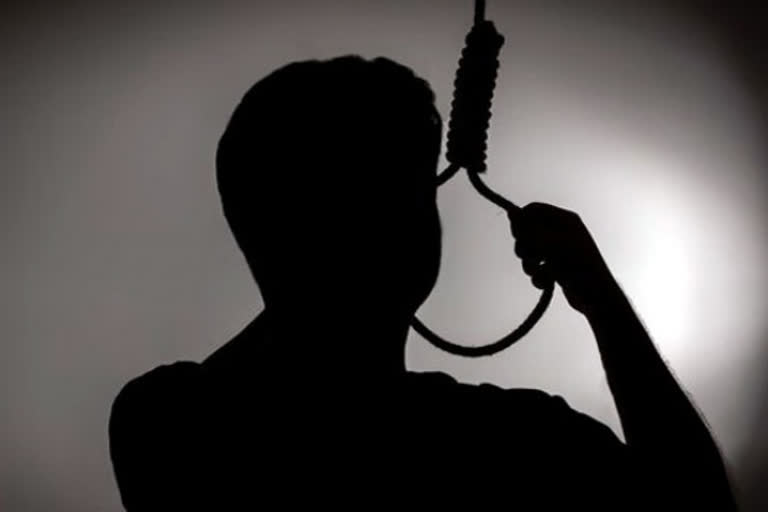New Delhi: Five states including Maharashtra, Tamil Nadu, West Bengal, Madhya Pradesh and Karnataka together accounted for 49.5 per cent of the total 1,39,123 suicides cases that took place in the country during 2019.
Suicide incidents also witnessed an increase of 3.4 per cent in comparison to 2018 and the rate of suicides has increased by 0.2 per cent during 2019 over 2018, said the latest data compiled by National Crime Records Bureau (NCRB).
Maharashtra recorded 18,916 suicide cases, followed by 13,493 in Tamil Nadu, 12,665 in West Bengal, 12,457 in Madhya Pradesh and 11,288 suicides cases were reported from Karnataka accounting for 13.6 per cent, 9.7 per cent, 9.1 per cent, 9.0 per cent and 8.1 per cent of total suicides respectively.
The remaining 50.5 per cent suicides were reported in the remaining 24 States and 7 UTs. Uttar Pradesh, the most populous State (16.9 per cent share of country population) has reported comparatively lower percentage share of suicidal deaths, accounting for only 3.9 per cent of the total suicides reported in the country, the report said.
Delhi, which is the most-populous Union Territory (UT), has reported the highest number of suicides (2,526) among UTs, followed by Puducherry (493). Remaining UTs together accounted for 2.2 per cent of total suicides in the country. A total of 22,390 suicides were reported in the 53 megacities of the country during 2019.
The States and UTs which have reported significant percentage increase in suicides in 2019 over 2018 were Bihar (44.7 per cent), Punjab (37.5 per cent), Daman & Diu (31.4 per cent), Jharkhand (25.0 per cent), Uttarakhand (22.6 per cent) and Andhra Pradesh (21.5 per cent) while highest percentage decrease was reported in Lakshadweep (100 per cent), Himachal Pradesh (21.1 per cent), Chandigarh (18.1 per cent), Arunachal Pradesh (15.2 per cent) and Jammu & Kashmir (13.9 per cent).
ETV Bharat talked to clinical and health psychologist Somya Singh over such an increasing trend of suicide cases in the country. “I believe family and loved ones can play a major role to stop these kinds of incidents,” said Singh.
Admitting the fact that suicide trend is increasing nowadays, Singh said, “even school children, job seekers, a person going with relationship issues have suicidal tendencies.”
Also read: Why actors are prone to suicide? Experts explain
The irony of this incident is that nobody speaks about it. “Many people have this belief that if they talk about suicide, it might trigger such incidents,” said Singh who did her MSc in clinical and health psychology from Bangor University in the United Kingdom.
She expressed concern that suicidal tendencies are not limited to a particular age. “Starting from teenage to adults and old person, suicide is not limited to anybody…depression and loneliness are two major factors of this kind of incidents,” said Singh.
The NCRB data said that the rate of suicides, the number of suicides per one lakh population, has been widely accepted as a standard yardstick for comparison. All India rate of suicides was 10.4 during the year 2019. A & N Islands reported the highest rate of suicide (45.5) followed by Sikkim (33.1), Puducherry (32.5), Chhattisgarh (26.4) and Kerala (24.3).
The NCRB report while highlighting the cause of suicide pointed out that ‘Family Problems’ and ‘Illness’ were the major causes of suicides which accounted for 32.4 per cent and 17.1 per cent of total suicides respectively during 2019.
It also found that drug abuse, addiction contributes 5.6 per cent suicides, suicide due to marriage related issues contributes 5.5 per cent, love affairs 4.5, bankruptcy or indebtedness 4.2 per cent, failure in the examination and unemployment 2.0 per cent each, professional/career problem 1.2 per cent and property dispute contributes 1.1 per cent of suicides incidents.
The report further said that Housewives accounted for 51.5 per cent of the total female victims (21,359 out of 41,493) and constitute nearly 15.4 per cent of total victims who committed suicides (21,359 out of 1,39,123) during 2019.
Government servants accounted for 1.2 per cent (1,684) as compared to 6.3 per cent (8,730) from private sector enterprises out of 1,39,123 of total victims.
It is observed that 66.7 per cent (92,757 out of 1,39,123) of the suicide victims were married while 23.6 per cent were unmarried (32,852). Widowed, widower, divorcees and separated have accounted for 1.8 per cent (2,472 victims), 0.7 per cent (997 victims) and 0.7 per cent (963 victims) of total suicide victims respectively during 2019.
Also read: People seeking professional mental health care constitute tip of the iceberg: Psychiatrist
As mode adopted by suicide victims, the NCRB report said that the share of fire self-immolation (from 4.4 per cent to 3.8 per cent) and by poison (from 26.7 per cent to 25.8 per cent) has decreased while shares of hanging (from 51.5 per cent to 53.6 per cent), by drowning (from 4.9 per cent to 5.2 per cent), and by touching electric wire (from 0.4 per cent to 0.5 per cent) have increased during 2019 over 2018.
Ironically, a total of 72 cases of mass/family suicides were registered during the year 2019. In these suicides, a total of 180 persons, comprising 126 married persons and 54 unmarried persons, lost their lives.
Maximum cases of mass/family suicides were reported in Tamil Nadu (16 cases) followed by Andhra Pradesh (14 cases), Kerala (11), Punjab (9 cases) and Rajasthan (7 cases) during 2019 with a total 43 persons in Tamil Nadu, 36 persons in Andhra Pradesh, 24 persons in Kerala and 22 persons in Rajasthan losing lives.



